We have much more to do and your continued support is needed now more than ever.
Revisiting the Santa Barbara Oil Spill
Last month, an estimated 101,000 gallons of crude oil spilled on the coastline near Santa Barbara, depositing thick black slicks over the water and pristine strips of Refugio State Beach and El Capitan. These beaches are places I frequent often, but more importantly, they are also home to an abundance of wildlife I work to protect in my job with the National Wildlife Federation.
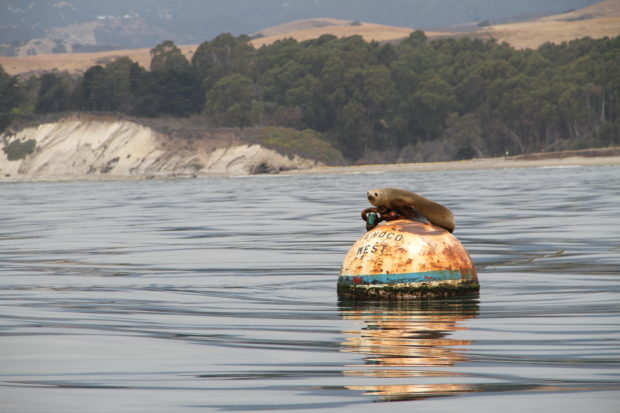
Upon my arrival at the Refugio State Park entrance, I was greeted by employees of the park, California Fish and Wildlife and NPS rangers. I explained my affiliation with NWF and my interests for being at the site to represent the interests of wildlife. Since I was unable to provide a press pass, I was asked to leave and warned that my presence was now known and I would be fined if I tried to enter the area.
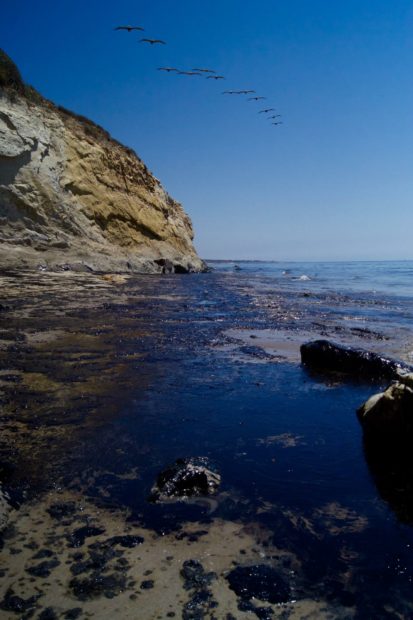
At this point, very little knowledge was being provided about the amount of oil or the determined cause of the spill. Darren Palmer, the chairman and CEO of Plains All-American Pipeline had only conveyed the company was working to identify the reason of the leak and that an estimated 21,000 gallons of crude oil may have reached the water. I was able to capture some images of the buckets of oil being gathered and splattered rocks on the beaches.
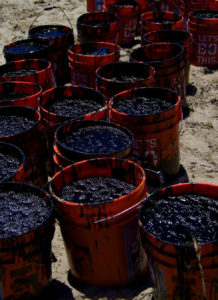
On our boat ride to Refugio State Beach, we saw sea lions, seals, dolphins and even a blue whale that came so close to the boat you could nearly touch it. Santa Barbara has natural oil seeps that can be seen and smelled on most days. However, as we entered the protected marine space just off the Gaviota Coast it became clear that we were not seeing typical natural seeps.
Miles of thick oil slicks drifted along the marine conservation area. The oil smothered areas of kelp forest that floated on the surface and coated the side of the boat. I found it amazing that we were amongst this huge slick in a marine protected space, and yet no boats were present doing any cleanup. Meanwhile, scattered along the coastline in patches were agency workers in white suits slowly moving about with their trash bags and cleanup tools.
Program director of the organization, Ben Pitterle was the captain of the boat for the day and his goal for the excursion was to drop the group’s underwater camera at Refugio and determine whether oil had accumulated on the seafloor.
Seafloor assessment and cleanup is not usually on the agenda after an oil spill, but some scientists believe that it should be. If oil has gathered on the seafloor then this information is critical for totaling the damage inflicted by the spill on marine life and the environment. Nonetheless, non-profits’ and universities’ requests to survey the ocean floor around Refugio have been continuously rejected, illuminating the confused bureaucracy around the official clean-up effort.
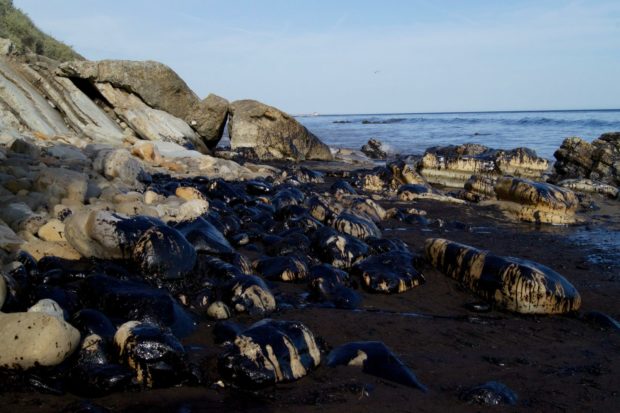
This was an interesting development because just an hour before, Ben had been on a conference call held by authorities for non-profits waiting for the go ahead to be involved. Top officials from Unified Command—the group in charge of the cleanup, which includes state and national agencies and Plains All American Pipeline —said they wanted to work with non-profits and were made aware that we were on the boat headed to the site.
“What we were hearing, at least from the top of the command chain, is that they’re trying to move in the direction of coordination and collaboration,” Ben told me. It was obvious as we turned the boat around that this collaboration had not yet made its way down the chain of command.
The logistics of this operation are obviously huge and complex, but it was clear that there was a serious disconnect in communication. The situation was frustrating for Ben because his organization along with researchers at the university, have special expertise and resources they can bring to the table. This is the marine area that they work in everyday and it was simply unfortunate that their resources were not being utilized.
Clean up costs for the spill have already exceeded $60 million to date, and are estimated at $3 million a day. And wildlife continues to be impacted, as the San Jose Mercury News recently reported, “Wildlife experts have recovered 161 dead birds and 87 dead marine mammals, mostly sea lions. Another 106 animals were found coated in oil and are undergoing rehabilitation.”
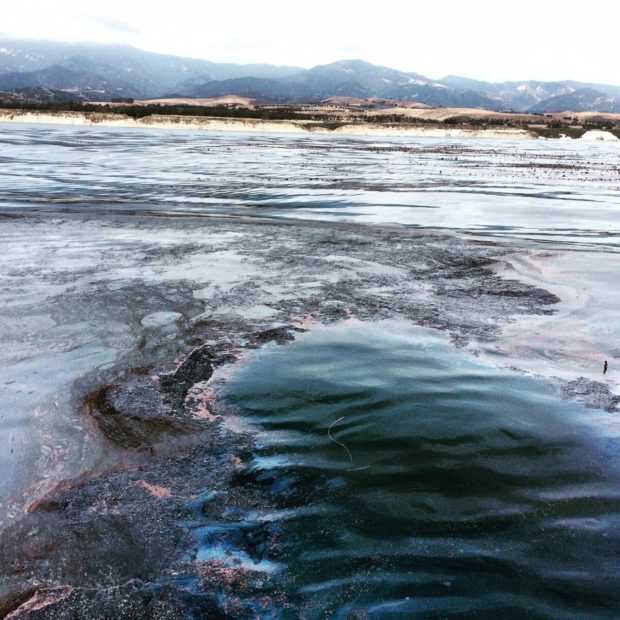
Safety regulations must be more strict and transparent ensuring that all pipelines are state of the art, monitored frequently and at the first sign of any issues are taken off the line and fixed immediately. Nevertheless, until we transition to clean wildlife friendly energy sources we will never be free of the risk of pipeline spills.
The age of fossil fuels must to come to an end. We need to make the transition to clean energy now, and put policies in place that reduce oil demand and speed the transitions to fossil fuel free energy sources. Let’s use what remains of the fossil fuel era to build the infrastructure, develop the technologies, and create the materials necessary for our complete transition to clean energy sources that do not leave wildlife at continuous danger.
In addition, it is essential that communities are well trained and well informed regarding the risks. There is a fine line between safety measures in an emergency and shielding view from the public. It was clear that this cleanup effort, like so many others, was dancing along that line. Trying to hide the extent of the damage to wildlife and ecosystems does not serve the public good, but are the oil companies interested in advancing that?
As NWF’s Senior Council Jim Murphy observed, “Now that they are being watched, Big Oil wants to hide the ball.”





















